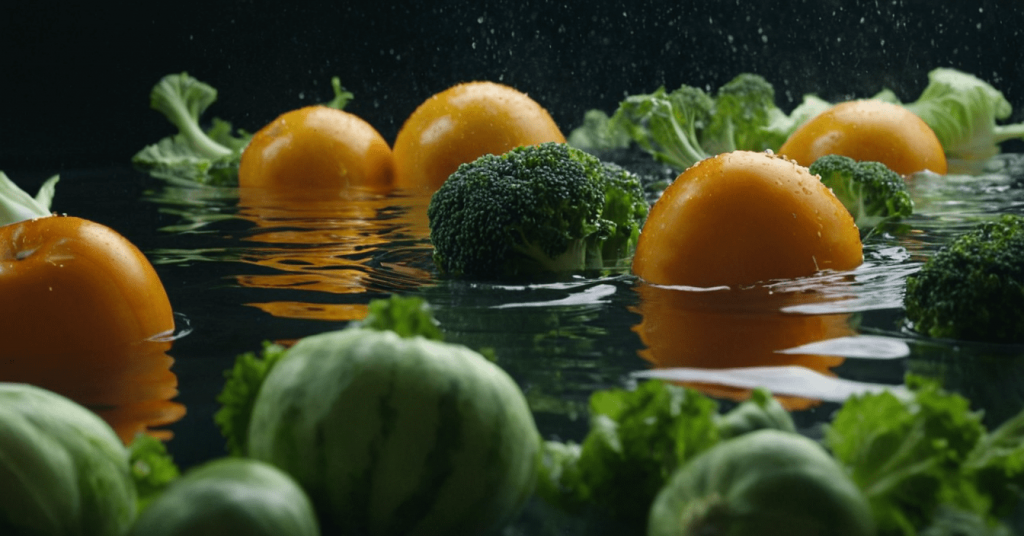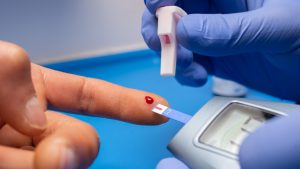Fruits and vegetables are fundamental pillars in a healthy diet, especially for people with diabetes. Beyond being low in calories and fat, they become a crucial source of vitamins, minerals, fiber, and, of course, water.
Water content in fruits and vegetables:
Fruits:
- High water content: Between 70% and 95%.
- Examples: Watermelon (92%), melon (90%), strawberry (91%), pineapple (87%), grapefruit (91%), orange (87%), kiwi (84%).
Vegetables:
- High water content: Between 70% and 95%.
- Examples: Cucumber (96%), tomato (94%), lettuce (95%), spinach (93%), broccoli (91%), cauliflower (92%), celery (95%), mushrooms (90%).

Importance of water in diabetes:
- Blood glucose control: Water helps eliminate excess blood glucose through urine.
- Prevention of dehydration: Dehydration can worsen diabetes symptoms such as fatigue, confusion, and constipation.
- Feeling of satiety: Water helps you feel full and satisfied, which can contribute to appetite control and, therefore, weight control.
- Electrolyte balance: Water helps maintain the balance of electrolytes in the body, which is crucial for the proper functioning of muscles and nerves.
- Digestive health: Water facilitates the digestion of food and prevents constipation.
Recommendations to increase water intake:
- Consume fruits and vegetables with high water content: Prioritizing these foods in your diet will help you increase your water intake naturally and deliciously.
- Drink water throughout the day: Don’t wait until you feel thirsty to drink water. Set a regular schedule to drink water throughout the day, even if you don’t feel the need.
- Carry a water bottle with you: Having a water bottle on hand will help you remember to drink it frequently and stay hydrated throughout the day.
- Add flavor to the water: If you find it difficult to drink water alone, you can add natural flavor with fresh fruits (such as lemon or orange slices), aromatic herbs (such as mint or basil), or cucumber.
- Consume soups and broths: Soups and broths are an excellent way to increase your water and nutrient intake at the same time.
- Avoid sugary drinks: Sugary drinks, such as soda, juices, and energy drinks, are not only high in calories but can also increase the risk of diabetic complications. Opt for natural water or low-sugar drinks.
Relationship with other blog posts:
- Glycemic index: The glycemic index helps you choose foods that do not raise blood sugar sharply. Fruits and vegetables with high water content usually have a low glycemic index.
- Essential foods for diabetics: Fruits and vegetables are essential for a diabetic diet, as they are low in calories and fat, and provide fiber, vitamins, and minerals.
- Symptoms of type 2 diabetes: Dehydration can worsen type 2 diabetes symptoms such as fatigue, confusion, and constipation. Drinking enough water can help prevent these symptoms.
Interesting facts:
- The human body needs approximately 2 liters of water per day, although this amount can vary depending on age, sex, physical activity level, and weather conditions.
- Thirst is not always a reliable indicator of dehydration. When you feel thirsty, your body is already 1-2% dehydrated.
- Fruits and vegetables are not only a source of water but also of other nutrients important for health, such as vitamins, minerals, fiber, and antioxidants.
- The fiber present in fruits and vegetables helps regulate blood sugar absorption, which is beneficial for people with diabetes.
Additional benefits of consuming fruits and vegetables:
- Reduced risk of cardiovascular disease: Fruits and vegetables are rich in antioxidants, which help protect cells from oxidative damage.
- Prevention of some types of cancer: Regular consumption of fruits and vegetables has been associated with a lower risk of developing some types of cancer.
- Improved digestive health: The fiber in fruits and vegetables helps keep the digestive system healthy.
- Strengthened immune system: The vitamins and minerals in fruits and vegetables help strengthen the immune system.
Conclusion:
The benefits of water in fruits and vegetables for people with diabetes are numerous and significant. By incorporating a variety of water-rich fruits and vegetables into your diet, you can improve your hydration, blood glucose control, and overall health.

Type 2 Diabetes: Is It Really Reversible?
A recent National Geographic article [link] explores how type 2 diabetes could be reversible with the right approaches. This condition, which affects millions of people worldwide, has long been considered a chronic and progressive disease. However, recent research challenges this perception and suggests that with lifestyle changes and the right approach, remission is possible. The

How Do GLP-1 Drugs Compare? A Breakdown of Ozempic, Mounjaro, and Trulicity
GLP-1 receptor agonists have revolutionized diabetes management, with drugs like Ozempic, Mounjaro, and Trulicity leading the market. But how do these medications compare in terms of effectiveness, side effects, and patient outcomes? Let’s explore their differences and what they mean for diabetes patients. Understanding GLP-1 Medications GLP-1 receptor agonists mimic a natural hormone that helps

Why Has Medicare Spending on Diabetes Medications Skyrocketed in 5 Years?
In the past five years, Medicare spending on diabetes medications has increased nearly fivefold, reaching $35.8 billion in 2023. This surge has been primarily driven by the growing use of GLP-1 drugs such as Ozempic, Mounjaro, and Trulicity. But what is behind this cost escalation, and how does it affect patients and the U.S. healthcare

The Gut Microbiota and Blood Sugar Control: A Hidden Connection
The human gut is home to trillions of bacteria that play a crucial role in digestion, immune function, and even metabolism. Recent research has revealed a fascinating link between the gut microbiota and blood sugar regulation, shedding light on how the balance of microbes in our intestines can influence diabetes risk and overall metabolic health.

The Dawn Phenomenon: Why Blood Sugar Rises While You Sleep
For many people with diabetes, waking up with high blood sugar levels can be frustrating—especially if they didn’t eat anything overnight. This early-morning spike in blood glucose is known as the Dawn Phenomenon, and it happens due to natural hormonal changes in the body. But why does it occur, and how can it be managed?

The Influence of Red Light on Blood: Can It Improve Diabetes?
Type 2 diabetes is a metabolic disease characterized by insulin resistance and elevated blood glucose levels. In the search for complementary alternatives to improve glycemic control, red light therapy has gained attention due to its potential to enhance circulation, reduce inflammation, and optimize cellular function. But what does science say about it? ✨ What is

